[prodccat level=4 cd=1 flac=1 digital=1 upnp=1]
 Pioneer have outdone themselves mating purist zen like styling and an outstanding feature set in this new SACD receiver. SACD receivers are not exactly one by the dozen in the first place and one that can receive audio streams certainly less so; not mentioning that it supports Flac albeit not the wildest of surprises since, after all, this is a SACD player. With a continuous 40W at 4Ω it is definitely no power station but it appears that Pioneer are signaling a new digital world order with this nice little device. They do have a new surround beast called SC-LX90 that does roughly the same as the PDX-Z9, only its 5 extraneous channels has caused some rather severe swelling, drastically impairing the zen stuff.
Pioneer have outdone themselves mating purist zen like styling and an outstanding feature set in this new SACD receiver. SACD receivers are not exactly one by the dozen in the first place and one that can receive audio streams certainly less so; not mentioning that it supports Flac albeit not the wildest of surprises since, after all, this is a SACD player. With a continuous 40W at 4Ω it is definitely no power station but it appears that Pioneer are signaling a new digital world order with this nice little device. They do have a new surround beast called SC-LX90 that does roughly the same as the PDX-Z9, only its 5 extraneous channels has caused some rather severe swelling, drastically impairing the zen stuff.
By the way, what is it with these product names? Do you remember Franquin’s comic series Spirou et Fantasio? Z comme Zorglub anyone? Ring a bell?
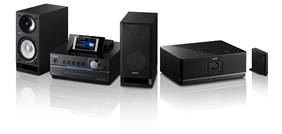 This is a complete system with zone system serving up to 5 rooms, ripping from CD and lossless streaming [
This is a complete system with zone system serving up to 5 rooms, ripping from CD and lossless streaming [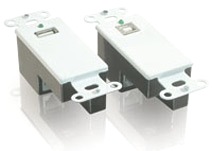 If you have a USB device you need to connect to your media streamer and need to run it more than the 5 metres USB is usually capable of, Impact Acoustics offer a neat little wall plate kit that lets you run USB through twisted pair up to 50 metres. The end points fit a standard American wall plate but a bit of ingenuity should suffice to fit it in a European panel. This repeater is USB 1.1 compatible so it should actually be able to feed a
If you have a USB device you need to connect to your media streamer and need to run it more than the 5 metres USB is usually capable of, Impact Acoustics offer a neat little wall plate kit that lets you run USB through twisted pair up to 50 metres. The end points fit a standard American wall plate but a bit of ingenuity should suffice to fit it in a European panel. This repeater is USB 1.1 compatible so it should actually be able to feed a 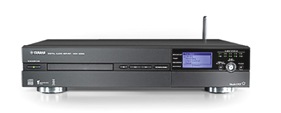 Like a bunch of other devices here, the Yamaha MCX-2000 offers CD ripping, storing and streaming. A total of 16 playback clients, including the server, is supported, letting you access music from its 160GB upgradable harddisk from just about every conceivable location. While it does not appear to support
Like a bunch of other devices here, the Yamaha MCX-2000 offers CD ripping, storing and streaming. A total of 16 playback clients, including the server, is supported, letting you access music from its 160GB upgradable harddisk from just about every conceivable location. While it does not appear to support 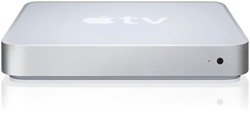 It just occurred to me that I had forgotten one of the major players in the field of digital media – Apple. Last year they canonballed their Apple TV into the arena and it really does deserve a mention.
It just occurred to me that I had forgotten one of the major players in the field of digital media – Apple. Last year they canonballed their Apple TV into the arena and it really does deserve a mention.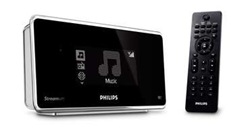 The Philips Streamium system has been extended with an internet radio, not entirely unlike the SLA5500 mentioned in the
The Philips Streamium system has been extended with an internet radio, not entirely unlike the SLA5500 mentioned in the 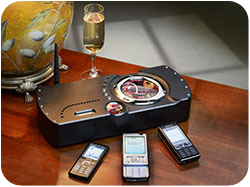 I mentioned the
I mentioned the 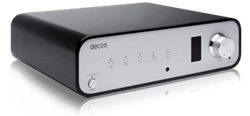 This is not your everyday device! Period. Well, exclamation mark, really. It is not a streamer but a DAC with an integrated 50W amplifier with a tube driven preamp. It has an USB to connect to a computer and an assortment of digital inputs for other digital devices. Add to that 2 analogue inputs and you have a centrepiece for your audio system.
This is not your everyday device! Period. Well, exclamation mark, really. It is not a streamer but a DAC with an integrated 50W amplifier with a tube driven preamp. It has an USB to connect to a computer and an assortment of digital inputs for other digital devices. Add to that 2 analogue inputs and you have a centrepiece for your audio system. Now to the digital inputs. The Decco supports the
Now to the digital inputs. The Decco supports the  A household name in hi-fi circles and it can hardly surprise anyone that Arcam too have a media streamer. It supports lossless encoding, even if it is unclear which formats. The MS250 contains a 400GB harddisk and ripping capabilities. Add to that streaming to 4 simultaneous zones and that in itself should be a nicely equipped addition to most audio systems. What makes this apparatus truly stand out is not its digital connections but its analogue input. It can actually record or stream from an analogue source – nifty! Really; consider streaming from your turntable to 4 different rooms… nifty!
A household name in hi-fi circles and it can hardly surprise anyone that Arcam too have a media streamer. It supports lossless encoding, even if it is unclear which formats. The MS250 contains a 400GB harddisk and ripping capabilities. Add to that streaming to 4 simultaneous zones and that in itself should be a nicely equipped addition to most audio systems. What makes this apparatus truly stand out is not its digital connections but its analogue input. It can actually record or stream from an analogue source – nifty! Really; consider streaming from your turntable to 4 different rooms… nifty!